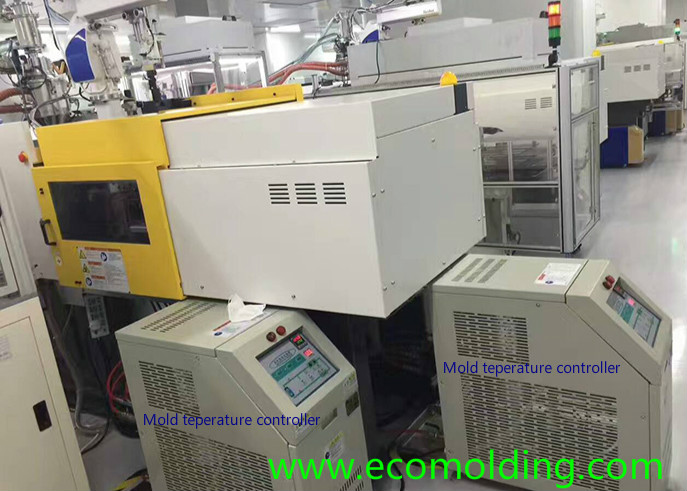Core Tips: during plastic processing, mold temperature is an important variable that needs to be properly controlled. The perfect temperature control is able to reduce the unit cost of plastic injection molding, improve the quality of molded products, ensure the correct replication of plastic part surface, and guarantee the uniformity of shrinkage. Therefore, mold temperature control must be optimized.

A hot mold surface keeps the plastic surface in a liquid state for a long time, which is enough to generate pressure inside the cavity. If the cavity is fully filled, and the pressure inside the cavity presses the soft plastic against the metal before the frozen skin hardens, the replication fidelity of the cavity surface will be high. On the other hand, if the plastic flowing into the cavity at a low pressure is suspended, no matter how short the time is, its brief contact with the metal will cause stains, which are sometimes referred to as gate stains.
For each plastic material and plastic product, there is a limit to the surface temperature of the mold, beyond which, one or more adverse effects may occur (for example, the component may have flashing and burrs). A higher mold temperature means lower resistance to flow. On many injection molding machines, this of course means faster flow through the runner, the gate and the cavity. Since the injection flow control valve applied does not correct this change, the faster plastic feeding will cause a higher effective pressure in the runner and the cavity, which may result in flashing and burrs. Since a hotter mold does not freeze the plastic that enters the flashing area before the high pressure is generated, the melt can flash over the ejector pin and spill into the gap of parting surface. This suggests that a great injection rate control is required, and some modern flow control programmers can actually do this.
Generally speaking, an increase in mold temperature reduces the condensation of the plastic in the cavity, allowing the molten plastic to flow more easily inside the cavity, resulting in a greater part weight and a better surface quality. At the same time, mold temperature rise will also increase the tensile strength of the part. Many molds, especially those for molding of engineering thermoplastics, need to operate under relatively higher temperature conditions. If the mold is not thermally insulated, the amount of heat lost into the air and the injection molding machine can easily reach the amount lost by the barrel. Therefore, the mold and the plate should be insulated and, if possible, the surface of the mold should be insulated, too. If the application of a hot runner mold is considered, try to minimize the heat exchange between the hot runner and the cooled molded product. Such an approach is able to reduce energy loss, as well as the warm-up time.
The Necessity of Temperature Control
(1) The Purpose and Effect of Temperature Control on Injection Molding
The appearance of the molded product, the physical properties of the material, and the molding cycle, etc., are significantly influenced by the temperature of the mold core. In general molding circumstances, the temperature of the mold core is kept low, and the number of injection cycles can be ideally increased. However, the molding cycle related to the shape of the molded product (the structure of the mold core) and the material type of the finished product still depends on the rise of mold core temperature during the plastic injection molding process.
(2) Prevent Stress via Temperature Control
This is related to the material of plastic injection molding. The only requirement is cooling rate. With a shorter cooling time, even with part solidified and the rest still soft, the stress caused by ununiform shrinkage can still be avoided. That is, a proper temperature control can effectively improve the cooling stress.
(3) Adjust Material Crystallization through Temperature Control
The improvement in the crystallization and mechanical properties of such crystalline materials as polysulfide (nylon), vinyl resin and polypropylene usually requires a higher mold core temperature.
The mold temperature for common plastic material:
| Plastic Material | Mold Temperature(℃) |
| ABS | 50-90 |
| PP | 50-75 |
| POM | >90 |
| LDPE | 50-70 |
| HDPE | 30-70 |
| PVC-soft | 15-50 |
| PVC-rigid | 30-50 |
| PS | 10-40 |
| PA6 | 70-120 |
| PA66 | 70-120 |
| PMMA | 50-70 |
| TPR | 50-70 |
| PC | 80-100 |
